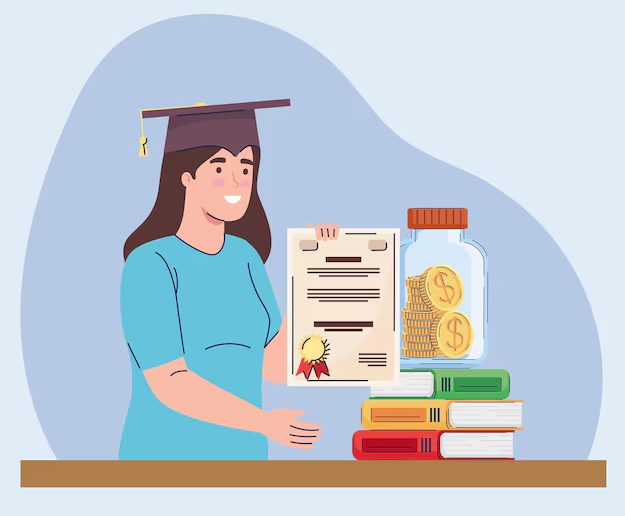Student loans have long been a cornerstone of higher education financing in the United States. However, 2024 brings significant changes to the regulations governing these loans, creating a new landscape that both students and parents must navigate.
Understanding these new rules is crucial to making informed decisions about borrowing and repayment. This guide will walk you through the most critical aspects of these changes, offering insights and strategies to help you manage your student loans effectively.
The evolution of student loan regulations in 2024

What has changed?
The student loan landscape in 2024 has undergone a substantial transformation, with new rules aimed at addressing long-standing issues like ballooning debt and inadequate repayment options. One of the most significant changes is the introduction of stricter eligibility criteria for federal loans.
These criteria are designed to ensure that only students who truly need financial aid receive it, reducing the overall debt burden. Additionally, the interest rates on federal loans have been recalibrated to reflect current economic conditions, offering borrowers a more favorable repayment environment.
Repayment plans have also seen a shift, with income-driven repayment (IDR) plans becoming the standard option for new borrowers. This change is intended to provide greater flexibility, allowing borrowers to repay their loans based on their income level rather than a fixed monthly amount.
Moreover, forgiveness programs have been expanded, but with more stringent conditions, making it essential for borrowers to stay informed about their eligibility and requirements. These modifications aim to balance the need for debt relief with the financial sustainability of the loan programs.
In addition to these structural changes, there has been an emphasis on transparency and borrower education. Lenders are now required to provide clearer information on loan terms and repayment options, ensuring that borrowers understand the full scope of their financial commitments. This initiative is part of a broader effort to promote responsible borrowing and prevent future financial crises.
Impact on borrowers
These changes have far-reaching implications for borrowers. The stricter eligibility criteria mean that students must be more diligent in documenting their financial need. This could result in fewer students qualifying for federal loans, pushing them toward private lenders who may offer less favorable terms. On the other hand, the recalibrated interest rates and IDR plans could provide significant relief to borrowers struggling with high monthly payments.
The expanded forgiveness programs are another critical area where borrowers must pay close attention. While these programs offer a pathway to debt relief, the stricter conditions mean that any misstep—such as missing a payment or failing to recertify income—could disqualify a borrower from forgiveness. This makes it more important than ever for borrowers to stay organized and proactive in managing their loans.
Moreover, the shift toward income-driven repayment plans means that borrowers will need to closely monitor their income levels and adjust their budgets accordingly. While these plans offer flexibility, they also require ongoing attention to ensure that payments remain affordable.
Strategies for navigating the new rules
Planning your borrowing
Given the changes in eligibility and repayment options, planning your borrowing strategy is more crucial than ever. Start by carefully assessing your financial need and exploring all available funding options before resorting to loans. Scholarships, grants, and work-study programs can significantly reduce the amount you need to borrow, easing your future repayment burden.
When taking out loans, prioritize federal options due to their more favorable terms and protections compared to private loans. If federal loans do not cover your entire financial need, consider private loans as a last resort, and be sure to compare interest rates, repayment terms, and borrower protections across different lenders.
It is also wise to consider your long-term career goals when planning your borrowing. Certain fields, such as public service or non-profit work, may offer loan forgiveness programs that can significantly reduce your debt burden. Researching these options ahead of time can help you make informed decisions about how much to borrow and which loans to take out.
Managing repayment
Once you’ve borrowed, managing your repayment effectively is key to avoiding financial strain. Take advantage of income-driven repayment plans, which can make your monthly payments more manageable by tying them to your income level. However, be aware of the long-term implications of these plans, as they can extend your repayment period and increase the total interest paid over time.
Stay on top of your loan status by setting up automatic payments and reminders for recertifying your income under IDR plans. Missing payments or failing to recertify can lead to penalties or disqualification from forgiveness programs. Additionally, if you find yourself struggling to make payments, consider options like deferment or forbearance, but use these sparingly, as they can increase the overall cost of your loan.
Another key aspect of managing repayment is staying informed about any changes in your financial situation or loan terms. Regularly reviewing your budget and adjusting your payment plan as needed can help you stay on track. Furthermore, if your financial situation improves, consider making extra payments to reduce the principal balance of your loan. This can help you pay off your debt faster and save money on interest in the long run.
Long-term implications and future considerations
Preparing for life after graduation
As you approach graduation, it’s essential to have a clear plan for managing your student loan debt. Begin by estimating your monthly payments and comparing them to your expected income post-graduation. This will give you a realistic picture of how much of your budget will be dedicated to loan repayment and help you plan accordingly.
If you’re pursuing a career in public service, explore the Public Service Loan Forgiveness (PSLF) program, which offers debt forgiveness after ten years of qualifying payments. However, be aware that this program has specific requirements, including working full-time for a qualifying employer and making payments under a qualifying repayment plan.
It is also important to consider the impact of your loan debt on other financial goals, such as buying a home or saving for retirement. Developing a comprehensive financial plan that accounts for your loan payments while also prioritizing other financial objectives can help you achieve long-term stability.





